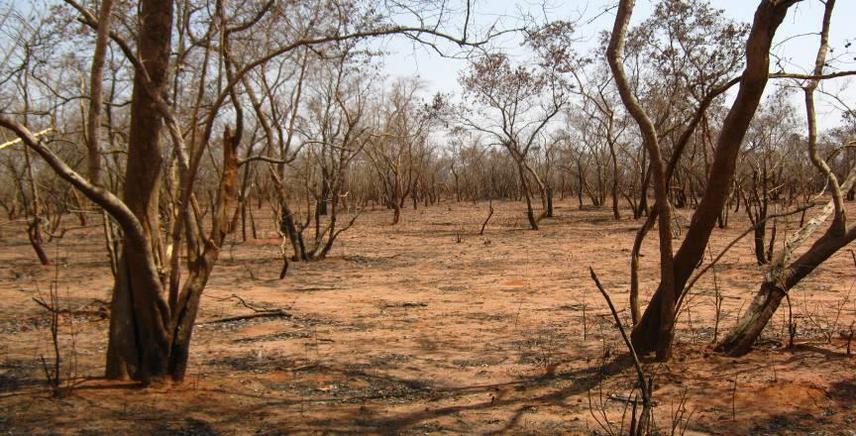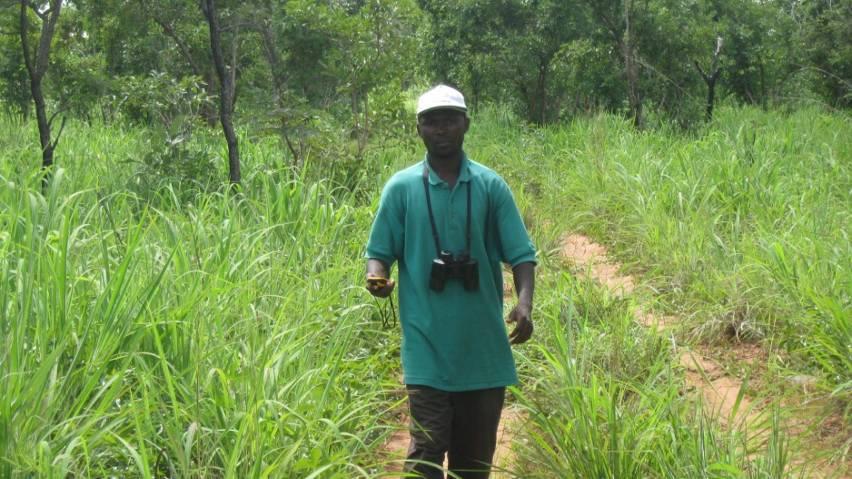Longtong Turshak
Other projects
3 May 2012
Fire and Herbivory Impacts Savanna Woodland Vegetation: Saving the Largest Protected Woodland in the Guinea Savanna Region of Nigeria
7 May 2015
Fire and Herbivory Impact Savanna Vegetation: Understanding the Fire, Herbivore and Woodland Community Interplay in One of Nigeria’s Foremost Game Reserves
3 Mar 2023
Delivering Better Ecological and Social Outcomes in a Nigeria’s Foremost National Park at the Brink of Losing its Conservation Value
This project aimed at investigating the effects of fire on trees and tree species use by birds for nesting in the savanna woodland and to present this finding to the Reserves Managers and Staff.

View of study area during dry season.
This project evolved as a result of my observation during a study of mammals and primates of the Yankari Game Reserve where the whole reserve is burnt. The fire regime seems to be carried out haphazardly. The fires are set between November and February of every year. A good number of the tree species in the reserve were observed to be death or having scars from the adverse effect of the fire. These trees were visibly wounded or retarded in their growths. Few bird nests have been recorded in the reserve that stimulates an interest of whether or not the fire interferes with their breeding activities.

Line transect will be used to record densities of vegetation and bird nest variables. Hundred transects of 1000 m long with a width strip of 100 m each will be randomly located in the Savanna woodland. The following variables will be recorded at each 100 m section along the transect line: density of wounded, retarded and death trees (caused by fire), density of death saplings (caused by fire), density of live saplings, density of live trees, and density of old and active bird nest. Tree species and bird whose nest is identified will be recoded. Density estimate of these variables will be carried out at each 100 m section along the transect line. All the variables will be measured within a 20 x 20 m square. A tree is considered when the circumference at breast height (CBH) is 50 cm below of which is a sapling. A sapling in this study must be a metre and above in height. All variable will be counted within a 100 m width strip to allow density estimate. Field work for data collection will last for a period of four months before the fire (from July-October) and four months after the fire (March-June).
When a nest is found, its location will be marked with a Global Positioning System (GPS) and the nest will be given an identification number (ID) and the following will be recorded: date, location (tree species), nest height on a tree, height of tree in which nest is located, nest with eggs and number of eggs, nest with chicks and number of chicks.
Findings from this project will be presented to the Management and Staff of the Yankari Game Reserve. A full report will also be made available to the game reserve.